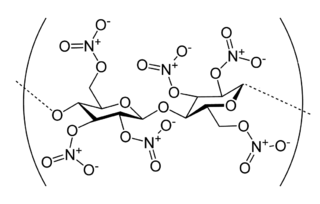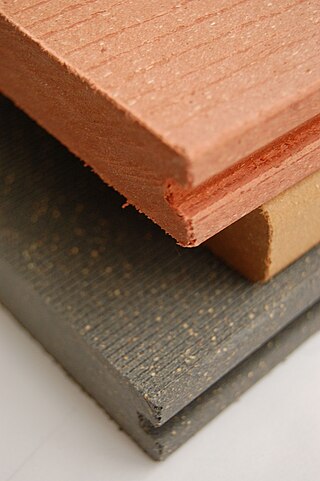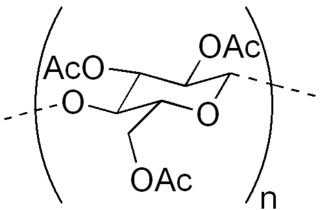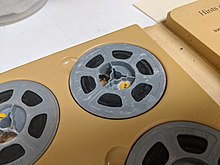
Film stock is an analog medium that is used for recording motion pictures or animation. It is recorded on by a movie camera, developed, edited, and projected onto a screen using a movie projector. It is a strip or sheet of transparent plastic film base coated on one side with a gelatin emulsion containing microscopically small light-sensitive silver halide crystals. The sizes and other characteristics of the crystals determine the sensitivity, contrast and resolution of the film. The emulsion will gradually darken if left exposed to light, but the process is too slow and incomplete to be of any practical use. Instead, a very short exposure to the image formed by a camera lens is used to produce only a very slight chemical change, proportional to the amount of light absorbed by each crystal. This creates an invisible latent image in the emulsion, which can be chemically developed into a visible photograph. In addition to visible light, all films are sensitive to X-rays and high-energy particles. Most are at least slightly sensitive to invisible ultraviolet (UV) light. Some special-purpose films are sensitive into the infrared (IR) region of the spectrum.

Nitrocellulose is a highly flammable compound formed by nitrating cellulose through exposure to a mixture of nitric acid and sulfuric acid. One of its first major uses was as guncotton, a replacement for gunpowder as propellant in firearms. It was also used to replace gunpowder as a low-order explosive in mining and other applications. In the form of collodion it was also a critical component in an early photographic emulsion, the use of which revolutionized photography in the 1860s.
Celluloids are a class of materials produced by mixing nitrocellulose and camphor, often with added dyes and other agents. Once much more common for its use as photographic film before the advent of safer methods, celluloid's common present-day uses are for manufacturing table tennis balls, musical instruments, combs, office equipment, fountain pen bodies, and guitar picks.

In biochemistry, cellulose acetate refers to any acetate ester of cellulose, usually cellulose diacetate. It was first prepared in 1865. A bioplastic, cellulose acetate is used as a film base in photography, as a component in some coatings, and as a frame material for eyeglasses; it is also used as a synthetic fiber in the manufacture of cigarette filters and playing cards. In photographic film, cellulose acetate film replaced nitrate film in the 1950s, being far less flammable and cheaper to produce.
Eastman Chemical Company is an American company primarily involved in the chemical industry. Once a subsidiary of Kodak, today it is an independent global specialty materials company that produces a broad range of advanced materials, chemicals and fibers for everyday purposes. Founded in 1920 and based in Kingsport, Tennessee, the company operates 36 manufacturing sites worldwide and employs approximately 14,000 people.

A plasticizer is a substance that is added to a material to make it softer and more flexible, to increase its plasticity, to decrease its viscosity, and/or to decrease friction during its handling in manufacture.

Polyvinyl butyral is a resin mostly used for applications that require strong binding, optical clarity, adhesion to many surfaces, toughness and flexibility. It is prepared from polyvinyl alcohol by reaction with butyraldehyde. The major application is laminated safety glass for automobile windshields. Trade names for PVB-films include KB PVB, GUTMANN PVB, Saflex, GlasNovations, Butacite, WINLITE, S-Lec, Trosifol and EVERLAM. PVB is also available as 3D printer filament that is stronger and more heat resistant than polylactic acid (PLA).

Wood–plastic composites (WPCs) are composite materials made of wood fiber/wood flour and thermoplastic(s) such as polythene (PE), polypropylene (PP), polyvinyl chloride (PVC), or polylactic acid (PLA).

Cellulose triacetate, triacetate, CTA or TAC is a chemical compound produced from cellulose and a source of acetate esters, typically acetic anhydride. Triacetate is commonly used for the creation of fibres and film base. It is chemically similar to cellulose acetate. Its distinguishing characteristic is that in triacetate, at least "92 percent of the hydroxyl groups are acetylated." During the manufacture of triacetate, the cellulose is completely acetylated; whereas in normal cellulose acetate or cellulose diacetate, it is only partially acetylated. Triacetate is significantly more heat resistant than cellulose acetate.

Dialysis tubing, also known as Visking tubing, is an artificial semi-permeable membrane tubing used in separation techniques, that facilitates the flow of tiny molecules in solution based on differential diffusion. In the context of life science research, dialysis tubing is typically used in the sample clean-up and processing of proteins and DNA samples or complex biological samples such as blood or serums. Dialysis tubing is also frequently used as a teaching aid to demonstrate the principles of diffusion, osmosis, Brownian motion and the movement of molecules across a restrictive membrane. For the principles and usage of dialysis in a research setting, see Dialysis (biochemistry).

Vinegar syndrome, also known as acetic acid syndrome, is a condition created by the deacetylation of cellulose acetates and cellulose triacetate. This deacetylation produces acetic acid, giving off a vinegar odor that gives the condition its name; as well, objects undergoing vinegar syndrome often shrink, become brittle, and form crystals on their surface due to the migration of plasticizers. Vinegar syndrome widely affects cellulose acetate film as used in photography. It has also been observed to affect older magnetic tape, where cellulose acetate is used as a base, as well as polarizers used in liquid-crystal display units and everyday plastics such as containers and tableware. High temperatures and fluctuations in relative humidity have been observed to accelerate the process. The process is autocatalytic, and the damage done by vinegar syndrome is irreversible.
A film base is a transparent substrate which acts as a support medium for the photosensitive emulsion that lies atop it. Despite the numerous layers and coatings associated with the emulsion layer, the base generally accounts for the vast majority of the thickness of any given film stock. Since the late 19th century, there have been three major types of film base in use: nitrate, acetate, and polyester.
Dibutyl sebacate (DBS) is an organic chemical, a dibutyl ester of sebacic acid. Its main use is as a plasticizer in production of plastics, namely cellulose acetate butyrate, cellulose acetate propionate, ethyl cellulose, polyvinyl butyral, polyvinyl chloride, polystyrene, and many synthetic rubbers and other plastics. It can be used for plastics in use in the food packaging industry, in plastics used for medical devices, and for pharmaceutical applications, e.g. as a plasticizer for film coating of tablets, beads, and granules. It is also used as a lubricant in shaving lotions, and a flavoring additive in non-alcoholic beverages, ice cream, ices, candy, and baked goods. It provides excellent compatibility with a range of plastic materials, superior properties at low temperatures, and good oil resistivity. Its other names include Morflex, Kodaflex, polycizer, Proviplast 1944 and PX 404. Dibutyl sebacate is also used as a desensitizer in Otto fuel II, a torpedo monopropellant.

Plastics extrusion is a high-volume manufacturing process in which raw plastic is melted and formed into a continuous profile. Extrusion produces items such as pipe/tubing, weatherstripping, fencing, deck railings, window frames, plastic films and sheeting, thermoplastic coatings, and wire insulation.

Cellulose acetate film, or safety film, is used in photography as a base material for photographic emulsions. It was introduced in the early 20th century by film manufacturers and intended as a safe film base replacement for unstable and highly flammable nitrate film.
Holston Army Ammunition Plant (HSAAP) manufactures Research Department Explosive (RDX) and High Melting Explosive (HMX) for ammunition production and development. It is a government-owned and contractor-operated (GOCO) facility that is part of the US Army Joint Munitions Command.

Cellulose fibers are fibers made with ethers or esters of cellulose, which can be obtained from the bark, wood or leaves of plants, or from other plant-based material. In addition to cellulose, the fibers may also contain hemicellulose and lignin, with different percentages of these components altering the mechanical properties of the fibers.

Plastic film is a thin continuous polymeric material. Thicker plastic material is often called a "sheet". These thin plastic membranes are used to separate areas or volumes, to hold items, to act as barriers, or as printable surfaces.

Conservation and restoration of objects made from plastics is work dedicated to the conservation of objects of historical and personal value made from plastics. When applied to cultural heritage, this activity is generally undertaken by a conservator-restorer.
The conservation and restoration of film is the physical care and treatment of film-based materials. These include photographic film and motion picture film stock.













